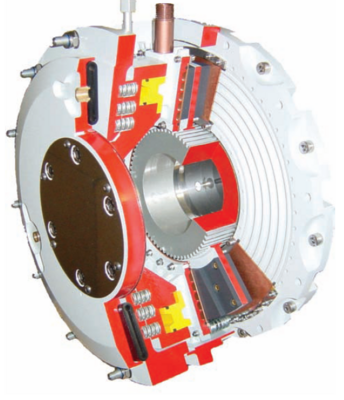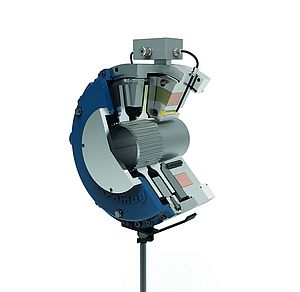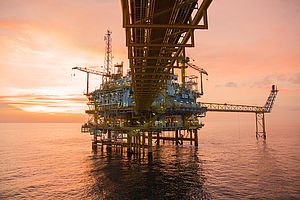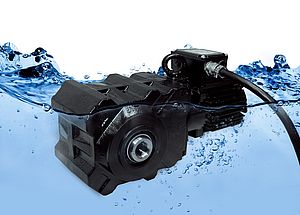Semi-submersible drilling platforms are used for exploratory drilling of potential new sites. The platforms are self propelled and capable of drilling in depths of up to 2,400 meters. Once the platforms are in position they can use dynamic positioning to remain stationary, however if the platform will remain in the same place for an extended amount of time then a mooring pattern will be laid. Due to the size of the platforms and depths that they operate in it is essential that the mooring pattern is spread, often over an area of 6 km; using a series of winches and brakes to control the cable payout.
A very wide spread, reaching 6 km, is necessary to ensure the platform’s stability. To achieve this spread an anchor handling vessel is used. The vessels transport the anchors, usually 8 but sometimes as many as 16, away from the platform and then lay them. The payout tension has to be controlled as the anchor handling vessels move further and further away from the semi-submersible rig and cable weight increases. Each corner of the platform is typically equipped with two mooring winches which, traditionally, need two secondary brakes; one brake for staticholding once the anchors are laid, and another - a slipping brake, to control the payout of the cable.
Brakes produced by Wichita Clutch, part of worldwide power transmission group AltraIndustrial Motion, are being used on semi submersible rigs for dynamic tensioning and the subsequent static holding of the anchorcables which keep the rig in position during drilling. At times the cables need to reach lengths of several kilometres, meaning that the torsional load on the winch can reach several hundred tonnes. The brakes are dualaction meaning that they are suitable for static holding but also to provide dynamic tension control during cable payout whilstin mooring mode, they utilise copper alloy heat transfer surfaces which provide the optimum heat dissipation for the highloads the brakes are subjected to during mooring.
These dual acting water cooled dynamic brakes are able to do the job of both brakes, meaning that each winch needs only one secondary brake. The brake uses a piston assembly for positive brake tensioning and a fail safe spring set brake operation for emergency stopping and holding duties. The brake will control the Payout of the cable at typical speeds of 40m/minute, generating typically 250 tonnes of tension on the cable. Once the anchors have been laid the multiple spring actuator will be applied for static holding. Disengagement of the static holding brake is achieved pneumatically and designed as a fail safe if there are any issues during mooring.
In any braking application it is important to consider the brakes heat dissipation capability, if the heat generated by the friction of the cable tensioning duty exceeds the convection capacity of the unit to dissipate it, the brakes operation maybecome compromised. During the payoutof the mooring cables typical power levels of 1,600 kW of continuous heat energy can be produced due to the high torque slipping of the brake. Providing a brake which is capable of high heat dissipation not only maintains reliability and extends operating life, it also allows the use of a smaller brake which provides cost saving.
The copper cooling which is used in the brakes is the most efficient method of heat dissipation in the range. Copper discs are used for high heat transfer from friction surface to the continuous flow of cooling water. The use of a patented Jacket Design, coupled with the copper wear plates, provides precise stopping / tensioning capabilities with very high heat dissipation characteristics.
Each brake is made specific to customer needs. Options include a salt water corrosion protection package which is ideal use on drilling rigs. While the brakes are displayed as providingup to 200,000Nm of torque they are able to increase this by up to 50% if required. High end materials are used including a reinforced neoprene fast acting air tube, designed to assure quick and smooth stops, and a new friction material which lasts longer with less wear on the mating copper. The spring set air release brakes are ideal for fail safe protection. High strength ductile iron construction is used throughout, and the use of thick friction linings provide for a longer wear life.
The Kopper Kooled range is suitable formany high intensity applications. On semi submersible platforms its products are alsoused on the storage winches which hold the mooring cable and on winches utilised by the anchor handling vessels. Other suitable applications include Oil/Gas drilling, Wind Energy and Tidal Energy.




























